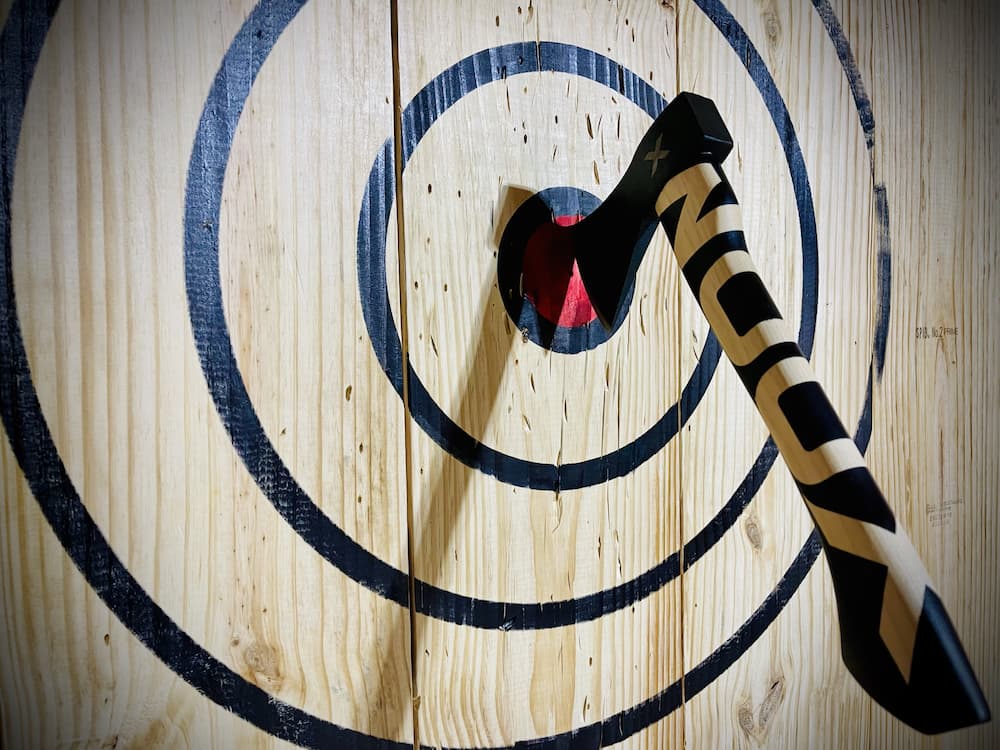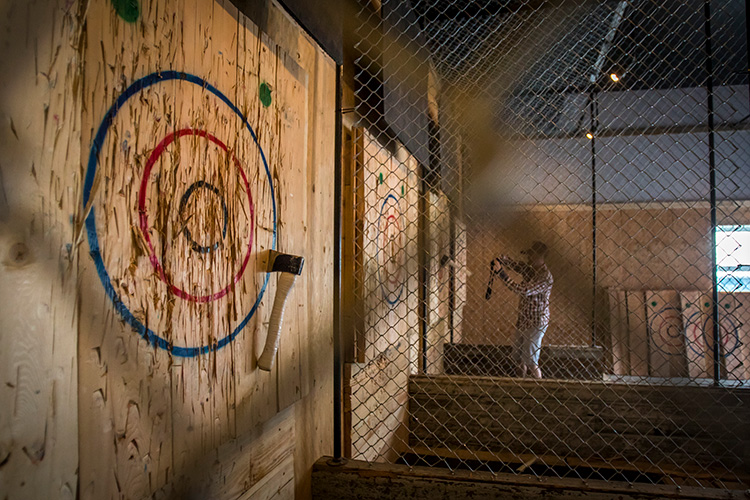Fun and Competition Await at Ax Throwing Denver: Join a League Today
Fun and Competition Await at Ax Throwing Denver: Join a League Today
Blog Article
The Enjoyable of Axe Throwing: How This Sporting Activity Integrates Ability and Adrenaline for a Blast
Axe throwing has actually arised as an astounding sport that masterfully links the requirement for accurate ability with the thrill of adrenaline, offering participants a unique and engaging experience. The act of tossing an axe towards a target requires focus and method, simultaneously promoting an ambience of camaraderie and friendly competition.
The Origins of Axe Throwing
Axe throwing, a recreational activity that has gotten substantial popularity in the last few years, traces its roots back to old times. This primitive sporting activity go back to early human history, when axes were largely used as weapons and tools. The earliest records of axe usage in affordable contexts are located amongst the Celts and Vikings, who threw axes for sporting activity in addition to in battle training. The practice was not just an activity however a critical ability for survival and warfare.
Middle ages European warriors, especially during the Center Ages, exercised axe tossing as component of their martial training. The Francisca, a sort of tossing axe utilized by the Franks, ended up being iconic for its fatal precision. This conventional tool was made to be thrown at enemy guards and armor, showcasing its twin energy in both sport and battle.
In more current history, axe tossing saw a resurgence in the logging camps of The United States and copyright in the 20th and 19th centuries. Lumberjacks would certainly participate in pleasant competitors, examining their accuracy and stamina by focusing on wooden targets. This development from a survival ability to a leisure task has led the way for its contemporary revival, with committed locations and organizations now celebrating the sporting activity globally.
Tools You Need
Comprehending the abundant background of axe throwing enhances the admiration of the sport's modern-day version. For recreational and affordable axe throwing, the most typically utilized kind is the hatchet, normally weighing between 1.25 to 2 pounds with a handle length of around 16 inches.
Equally vital is the target. Guideline targets are constructed from wood, with softwood varieties like want or cottonwood being favored for their capacity to absorb and hold the axe. The target is generally separated right into five concentric circles, each with a specific point value, to assist in scoring.
Security gear, however often forgotten, is critical. Safety gloves can improve hold and stop sores, while closed-toed footwear are a should to secure feet from gone down axes (denver axe throwing). Lastly, a well-lit, roomy throwing area, full with safety obstacles, ensures a controlled atmosphere where participants can concentrate on developing their skills.
Fundamental Techniques Described
Understanding the fundamental methods of axe throwing is essential for both security and proficiency. The dominant hand ought to be positioned directly below the axe head, while the non-dominant hand supports the end check of the handle.
Your dominant foot ought to be a little forward, straightening with your target. This positioning aids in preserving security and guiding power properly towards the target.

Safety And Security First
Making sure safety in axe throwing is critical to developing an injury-free and satisfying experience. Safety determines begin with the venue design. A well-designed axe tossing facility features clear separations in between tossing lanes, sturdy backdrops to capture stray axes, and non-slip flooring to stop crashes. Furthermore, appropriate lighting is critical to help individuals maintain visual precision and spatial understanding.
Advantages of Axe Throwing
Axe throwing deals a myriad of advantages that expand past easy recreation. The repetitive motion of tossing the axe additionally boosts hand-eye coordination and great electric motor skills.
Emotionally, axe throwing requires technique, focus, and precision, making it an exceptional way to sharpen cognitive abilities. The focus required to hit the target can serve as a type of mindfulness, allowing participants to remove their minds and decrease anxiety. This mental engagement can be especially valuable in assisting people develop far better analytic abilities and psychological strength.
Socially, axe throwing is typically appreciated in team settings, cultivating team-building and friendship. Whether as part of a company event or a laid-back getaway with pals, the sporting activity motivates interaction and collaboration. Furthermore, the public experience of learning and boosting together can enhance partnerships and create long-term memories.
Conclusion

The earliest records of axe use in affordable contexts are discovered among the Celts and Vikings, that threw axes for sport as well as in battle training. Release the axe when your hands are roughly at eye degree, permitting the axe's all-natural rotation to guide it in the direction of the target.
A well-designed axe throwing facility functions clear demarcations in between tossing lanes, sturdy backdrops to catch stray axes, and non-slip flooring to stop accidents. Individuals have to be instructed on the proper way to throw the YOURURL.com axe and take care of, highlighting managed, intentional motions over powerful tosses.
In recap, axe tossing stands out as a sporting activity that masterfully integrates skill, adrenaline, and accuracy.
Report this page